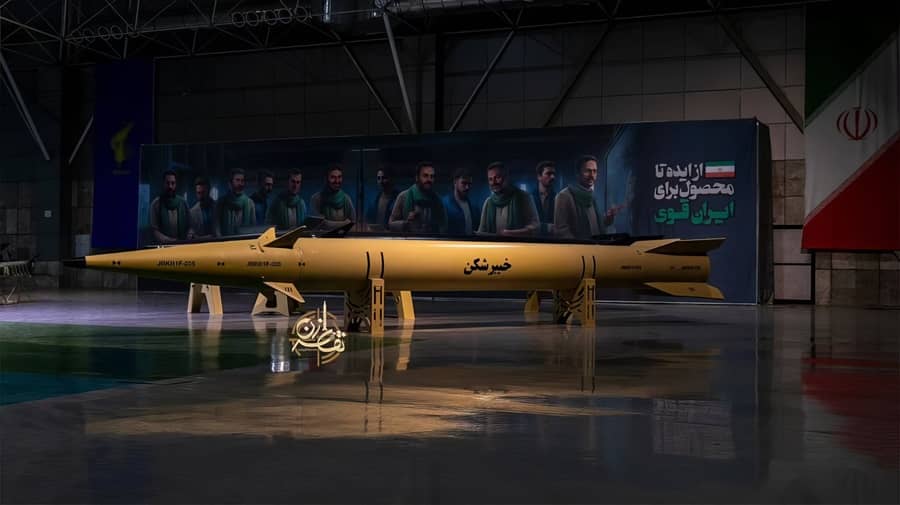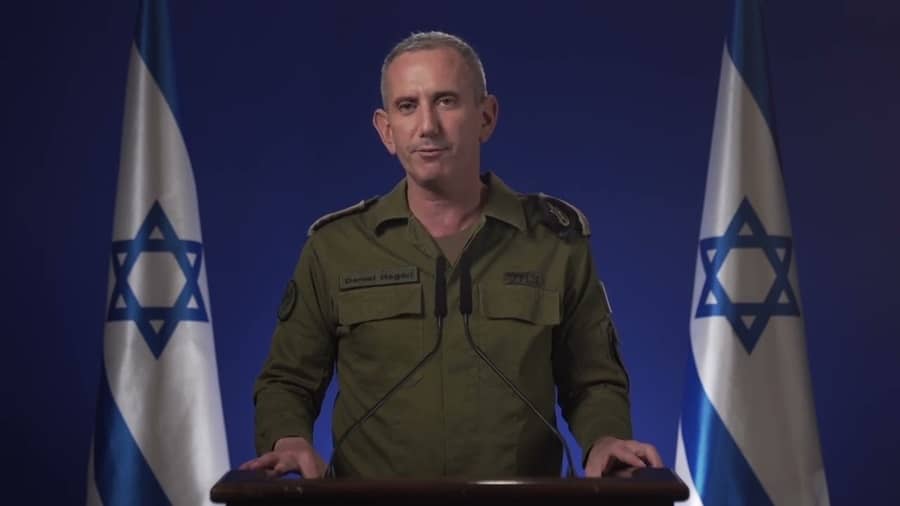Iran finally attacked Israel with a flurry of missiles and drones on Saturday night and early Sunday in response for against the Israeli strike on its consulate in Damascus on April 1 that left 13 people dead. The operation was called “True Promise”.
It was the biggest drone strike ever executed by any nation, and it was Iran’s first frontal assault on Israel in over fifty years of enmity.
What was the target?
According to the reports, Iran targeted the Ramon Airbase in the Negev, which is located in the southern part of Israel. Israel confirmed that the military base was hit during the attack and several places were destroyed. According to the Israeli officials, there was slight damage in the military base. However, Iran claims that the missiles hit the targets perfectly.
Operation True Promise
The operation, named “True Promise” by the Islamic Revolutionary Guard Corps (IRGC), aims to demonstrate to Tehran’s senior leaders—including Supreme Leader Ayatollah Ali Khamenei—that they will carry out their promises of “punishment” for strikes by Israel and other parties.
Following an Israeli raid on the Iranian consulate in Damascus on April 1, which claimed the lives of six other persons and seven members of the IRGC, including two generals in charge of overseeing operations in Syria and Lebanon, the attack was carried out in retaliation.
Its primary goal was to bolster Iran’s deterrence, which some claimed had been undermined by the US and its allies’ increasingly aggressive policies and military operations throughout the region, particularly after top general Qassem Soleimani was assassinated in Iraq in January 2020.
In the aftermath of the assault on Gaza, Iranian officials also seemed to have shown some “strategic patience” following the late December killing of Razi Mousavi, another top IRGC commander in Syria, in an Israeli airstrike.
In this spirit, inaction, lesser-grade strikes, or accepting military action via the “axis of resistance” of allied groups throughout the region would be seen as too expensive for Iran, both domestically and internationally.
This is the case even as Tehran acknowledges that Israel and Prime Minister Benjamin Netanyahu’s beleaguered administration would stand to gain from raising regional tensions and pressuring the US military to act more aggressively against Iran.
However, in the long run, when compared to other regional powers, Iran may benefit from these unprecedented Iranian attacks in terms of soft power gains in the Muslim world, even though they momentarily diverted attention away from the tens of thousands of women and children who have died in the Gaza Strip.
Despite the slaughter in Gaza, Saudi Arabia has not ruled out normalizing relations with Israel, and Turkey only began restricting some exports to Israel earlier this week after the Israeli government forbade it from airdropping aid over the beleaguered enclave, where newborns are starving to death. But Saudi Arabia and Turkey have also harshly criticized Israel’s war on Gaza, both openly and deeply.
Since attacks on diplomatic missions indicate a violation of the Vienna Convention and since Article 51 of the UN Charter enshrines the “inherent right” of self-defence, which Israel has been heavily relying on since the beginning of the Gaza war, Iran would also have strong arguments at the UN Security Council.
Iranian weapons used to carry out the attack
The Israeli military said that around 300 drones and ballistic and cruise missiles were launched on Israel, however Iran has not confirmed the precise number of missiles used.
Iranian drones have been in the news around the world lately, particularly after Russia invaded Ukraine more than two years ago. Russian military Shahed drones, built in Iran, are still dropping bombs on Ukrainian territory, according to Ukrainian officials.
Iranian state media reported on Sunday that the attack on Israel was carried out by Shahed-136 kamikaze drones, which have a very tiny bomb that weighs about 50 kg (110 pounds). About 7 Kheybar Shekan missiles landed on the Ramon airbase.

According to IRGC-affiliated Telegram channels, the attack also used the Shahed-238, which is propelled by a turbojet instead of the propeller found in the 136 variant. The 238 variant offers considerably greater speeds—up to 600 kmph (372 mph)—in exchange for a slight loss of maneuverability.
Although Iran has long been recognized as having the most extensive and diverse missile arsenal in the Middle East, this was undoubtedly the biggest test of its powers.
According to state television, Israel was attacked by the Emad long-range ballistic missile and the Paveh cruise missile.
In February, the IRGC fired the Dezful ballistic missile from a warship and utilized Emad missiles in massive military drills that included a mock strike on Israel’s Palmachim airbase.
Along with a cruise missile of the same family, Iran also possesses Fattah, a hypersonic ballistic missile that could reach Israel in as little as seven minutes. There was no proof that the early Sunday attacks made use of the missiles.
In any case, Iran has recently carried out its biggest-ever drone and missile strikes, spanning many hours and covering some of their longest distances in a genuine military operation.
Commander-in-chief of the IRGC Hossein Salami stated, “The operation achieved a level of success that exceeded our expectations.” He added that the projectiles were only aimed at military locations, such as the Nevatim airbase in the Negev desert, which is purportedly where the Israeli strikes on the Iranian consulate in Syria were launched from.
IDF’s statement regarding the attack
After the attack, Daniel Hagari, the military spokesperson of Israel told the media that most of the Iranian missiles were intercepted.

A video was posted by IDF showing a missile from the Iron Dome intercepted the incoming missile from Iran. But in another video posted by Iran shows that the missile dogged the oncoming Iron Dome missile and landed successfully.
Israel stands by it’s statement that 99% of the missiles were intercepted. But some videos have surfaced showing the destruction caused by the Iranian attack. In the coming articles, we will address the validity of this case by further investigating the matter.
❤️❤️